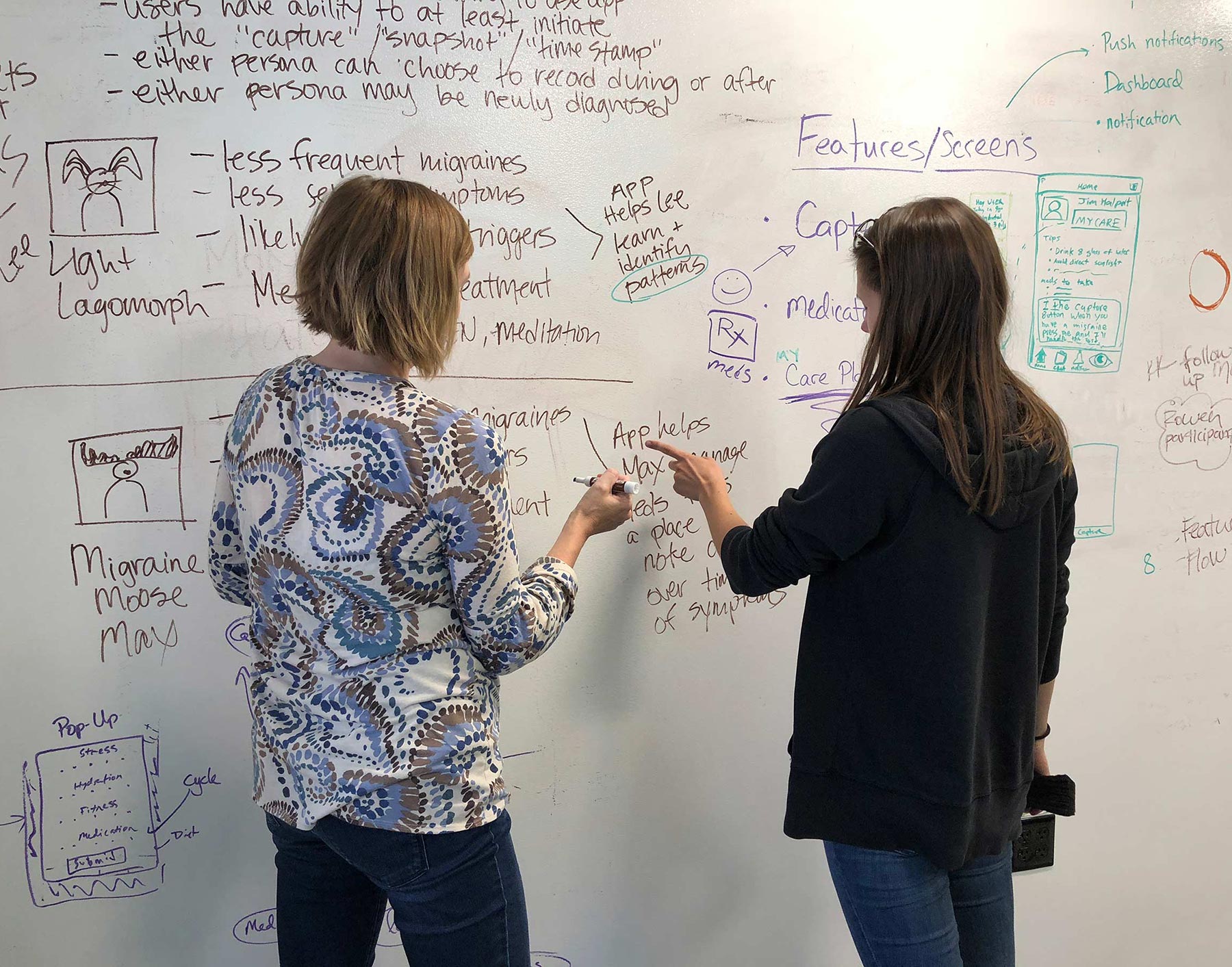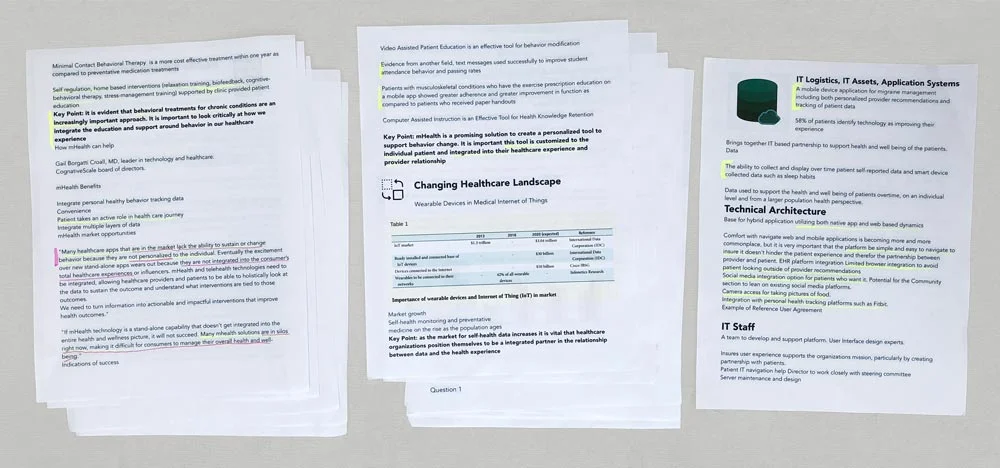Care Chronicle
Healthcare Mobile Application
How might we enable doctors and patients to work together to improve health care plan management for chronic conditions?
Overview
Create an integrative medical app that allows providers and patients to collaboratively manage chronic conditions — starting with migraine patients. This would solve a need by transforming provider/patient communication and digitizing symptom tracking and treatment resources. Our biggest challenge was to make a "migraine-in-progress" friendly design that was flexible and easy to use while including all the necessary components.
The Solution
We created Care Chronicle, a native iOS mobile app design for migraine sufferers with an accompanying desktop dashboard for clinicians. This will allow doctors to customize their patients’ care plans and allow patients to access care plans and track their migraines.
We used human-centered design thinking to gain understanding, empathize and reduce risk. We also used the design sprint process to quickly ideate, prototype and test our ideas.
Our research revealed three key phases needed to successfully track and manage migraines: identify, treat, evaluate. By patients tracking daily health habits and recording their migraine events, both doctors and patients can better understand triggers, patterns, symptom severity and remedies in order to co-create and manage care plans.
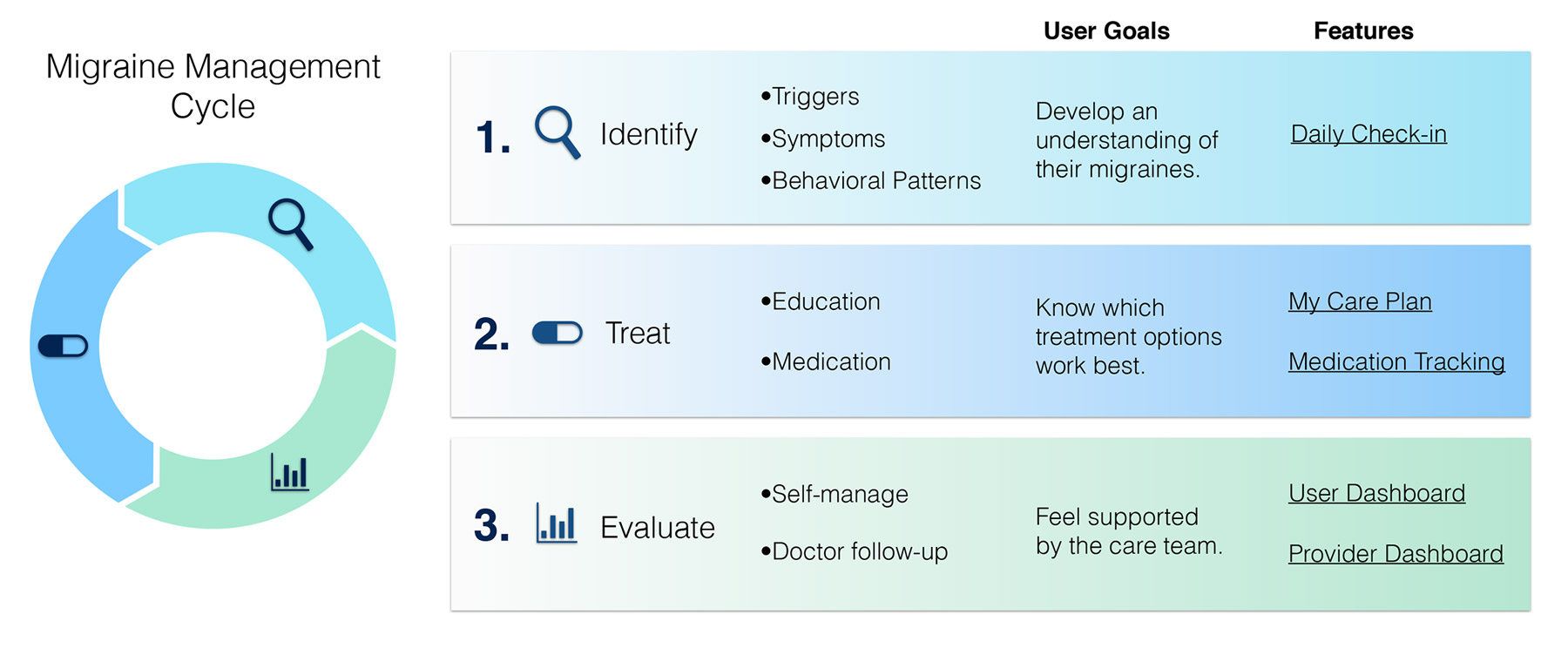
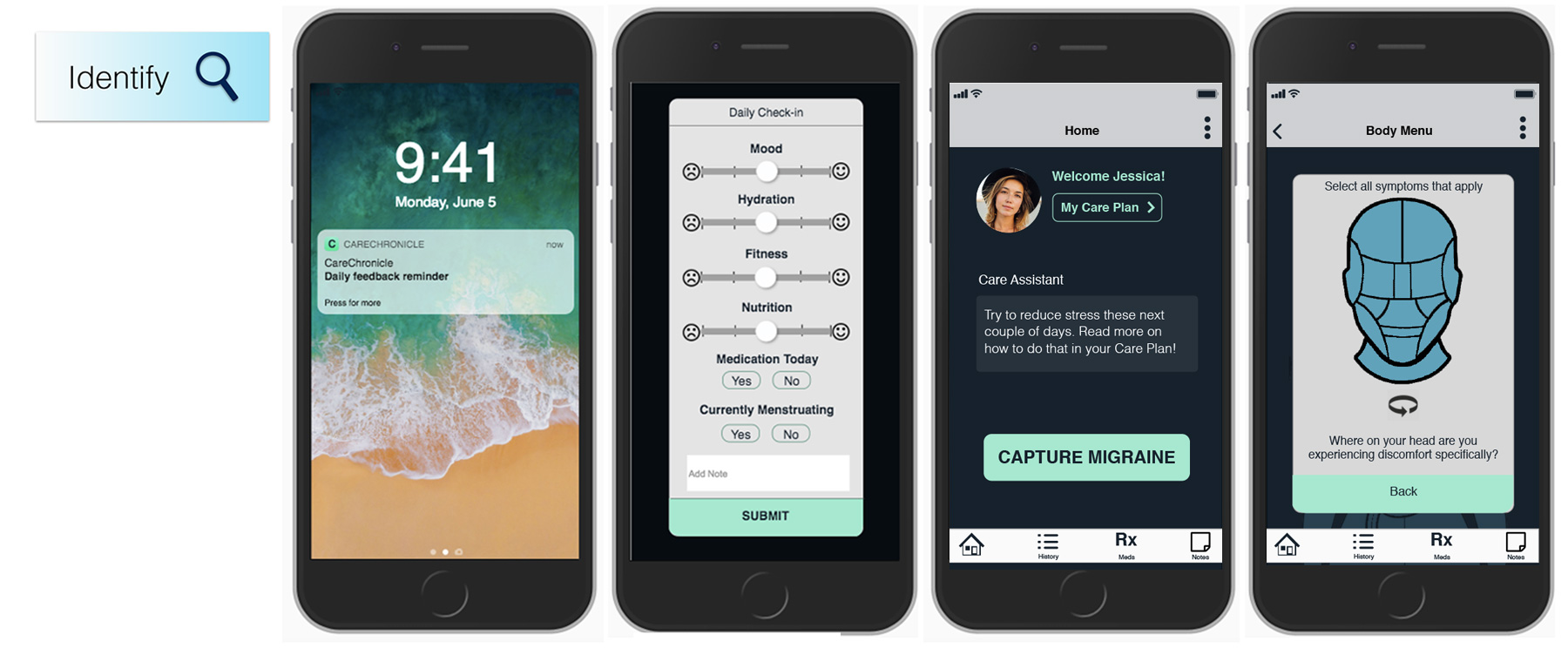


Methods I Used with My Team
Stakeholder Interview / Client Kickoff
Requirements & Constraints Gathering
Survey for Initial Research
Diary Studies
Competitive Analysis (current analog & digital tracking systems)
Interviews & Directed Storytelling
Research Analysis & Synthesis
Mind & Empathy Mapping
Journey Mapping Storyboard (low fidelity)
Rapid Prototyping (analog & digital)
Usability Testing (analog & digital)
Additional Methods Used by Team
Card Sorting
Personas & Scenarios
Kano Anaysis & Survey
Storyboarding (high fidelity pen & ink)
My Role
User Research
Analysis & Strategy
Interaction Design & Prototyping
User Recruitment
Client Liaison
Branding
Tools Used
White Boards
Paper, Pen & Pencil
Trello
Realtime Board, Coggle
Sketch App
Axure RP
Adobe Illustrator & Photoshop
Voice Memo & Camera (documentation)
Google Docs, Sheets & Surveys
Keynote
The Client
Rowen Berry of HealthPartners - Park Nicollet
This app is intended to be managed and dispensed to patients through HealthPartners. Rowen's goals and vision for the project:
- Create a tool to improve how patients and providers collaborate to manage chronic conditions, starting with migraines.
- Improve communication between patient and provider
- Modular design which can be expanded to other chronic conditions
“This app will improve migraine management by transforming care plan communication via a single provider through an interactive platform for resources, recommendations and personal health data tracking. It is important that this tool be customized to the individual patient and integrated into their healthcare experience and provider relationship.” — Rowen Berry
Our Challenge
Migraine apps already exist, but they tend to be overly complex and are not "migraine-in-progress" friendly. Our challenge was to create a better solution and user experience by
- Personalizing the app, thereby allowing data management and reducing complexity
- Designing flexible interactions to record migraine symptoms now or later
- Integrating it into the the provider/patient system for iterative customization and treatment plans, thereby also eliminating paper migraine diary tracking.
Current paper migraine tracking system.
Currently if a patient is diagnosed with migraines they are given a paper migraine tracking system. The problem with these is they are often lost, filed away, forgotten or not handy when experiencing a migraine. How many patients carry their migraine folder and treatment plans with them wherever they go? By digitizing this process, migraine patients can access their treatment plans and record their migraines wherever they are.
Our Approach
Deep Dive Research and Learning
We began with the stakeholder / kickoff meeting to identify goals, requirements and constraints. Our client Rowen shared her MindMeister mind map with us, a wealth of information and research, but hard to digest in its sprawled out form. I copied, pasted and rough formatted her MindMeister mind map into a 32 page document for our team to read and refer to throughout the app creation process.
Cleint's MindMeister mind map. These screenshot slices show about one third of the original mind map.
Our client's MindMeister mind map, formatted into a 32 page document.
Discovery
What is it like to experience a migraine?
What causes a migraine?
Are migraines generally the same or are there variations?
How do migraine sufferers manage their migraines?
Can they use screens (for an app) during a migraine?
These are just some of the questions we needed answered.
Migraine Survey and Diary Studies
I developed the initial survey and diary study research protocols and I recruited eight users. We received eight survey responses and seven completed diary studies.
Interviews and Card Sorting
We conducted four in-person interviews and seven card sorting exercises.
Primary exploratory research.
As we were analyzing and synthesizing our primary research data using spreadsheets and whiteboards, I created a Secondary Research Moodboard using Realtime Board with content I curated from articles and online migraine communities to round out our research.
I created a Research Moodboard using Realtime Board with content I curated from articles and online migraine communities.
I created Mind Maps using Coggle to explore, distill and diagram data from our primary and secondary research. The map below is an exploratory mind map which has two parts: a migraine mind map on the left and a migraine app mind map on the right.
Exploratory mind map made using Coggle. The left side maps migraines, the right side maps our migraine app.
Below is an Empathy Map, which I also created with Coggle. Although there is a bit of overlap between the mind maps and the empathy map, these maps each helped our team better understand migraines and helped create empathy for migraine sufferers.
Neither the mind map nor the empathy map covered all of our ideas and research, but they served as great jumping off points to start ideating app features, screens and user flows.
Empathy mind map made using Coggle.
Based on our research and competitive analysis of other migraine apps, we began to develop feature sets and wireframes.
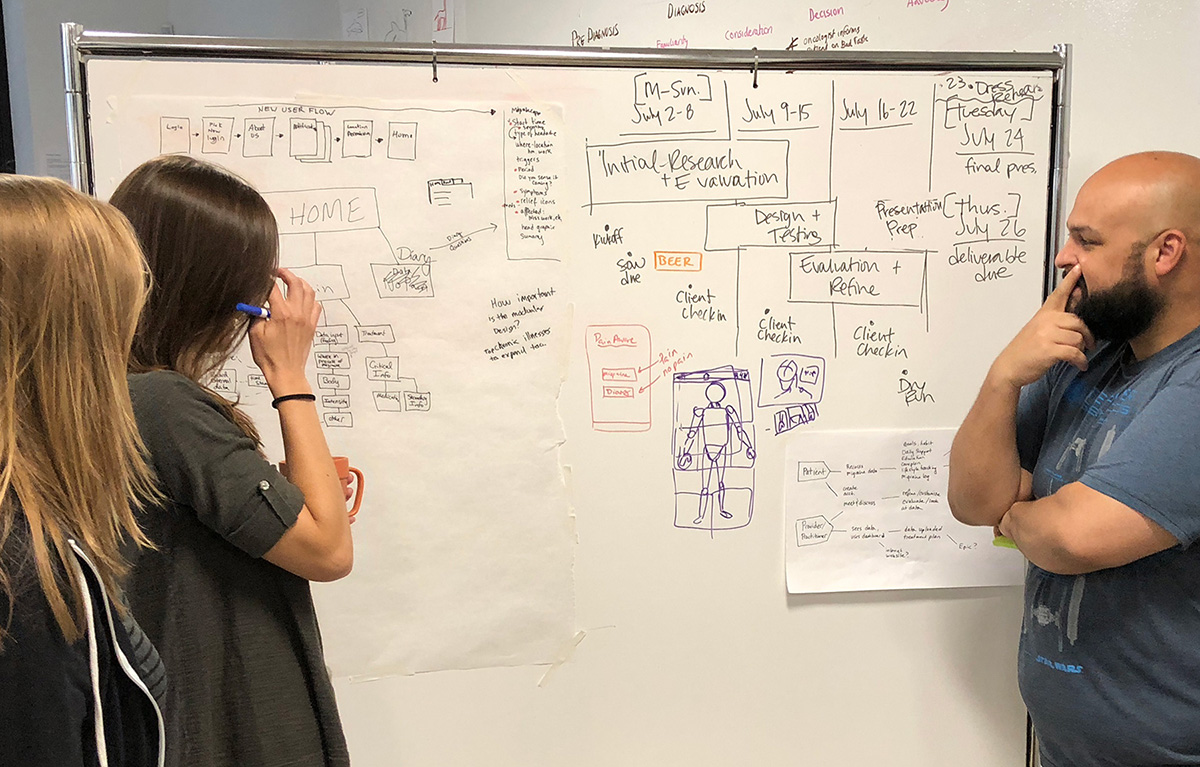

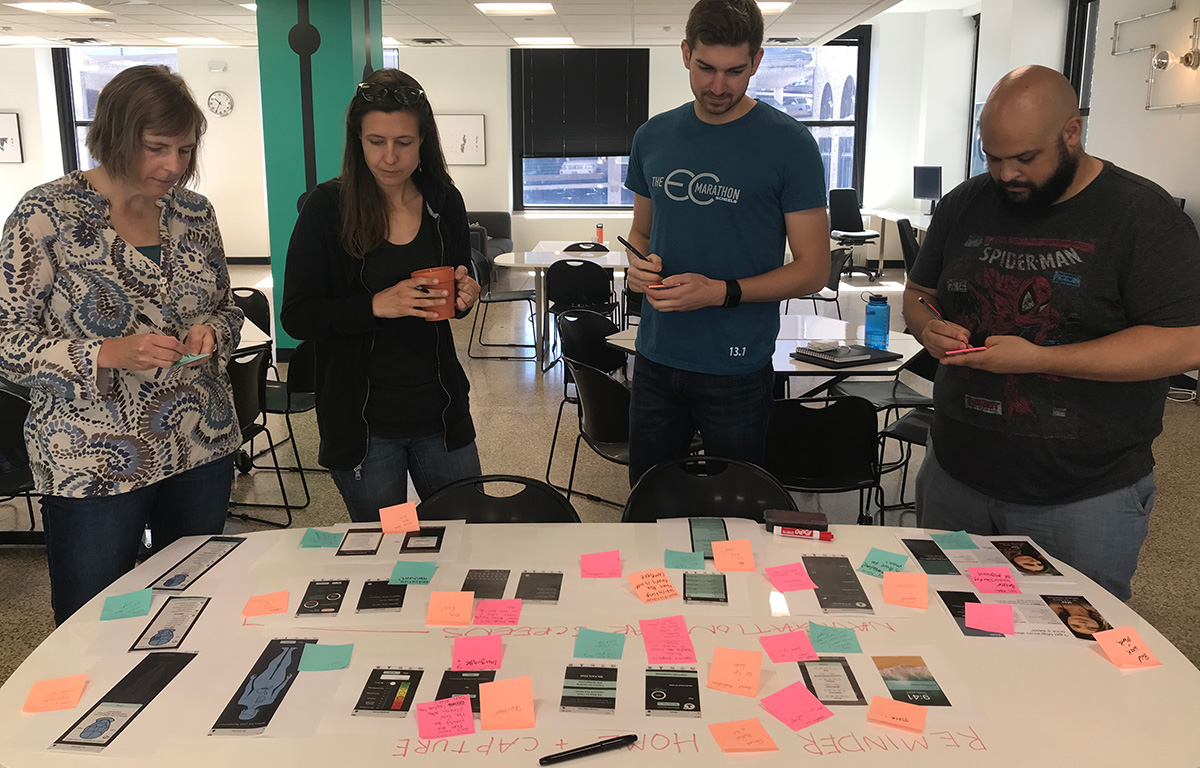
Kano Survey
We identified key features we thought should be included in the app. We tested ten of these in a Kano survey with ten migraine research participants to see how important they were to them. In the photo slideshow below are two of the features with user comments. The other two photos show the survey results of all ten features.




One of the most difficult parts of the whole app was designing the home page and beginning "capture migraine" sequence. We sketched and prototyped many versions. Each of us had our own opinion of how these screens should work.
Talking through our ideas, detailing scenarios, sketching storyboard journey maps, holding critiques and talking with users helped us land on the final version. But it took several days, many iterations and was by far the most difficult to design.
Low fidelity journey / experience map.
Key Takeaways
Migraines are a poorly understood neurological condition that can include vascular and/or muscular pain. They are often undiagnosed and under treated. Migraines have many triggers such as weather, stress, sleep, hormones, diet and imbalances in serotonin.
Migraines can include visual impairment such as vertigo, blurry vision and seeing colors and patterns that shouldn’t be there. They can produce intense throbbing pain, nausea, sensitivity to light, sound, smells and last anywhere from 4 to 72 hours.
